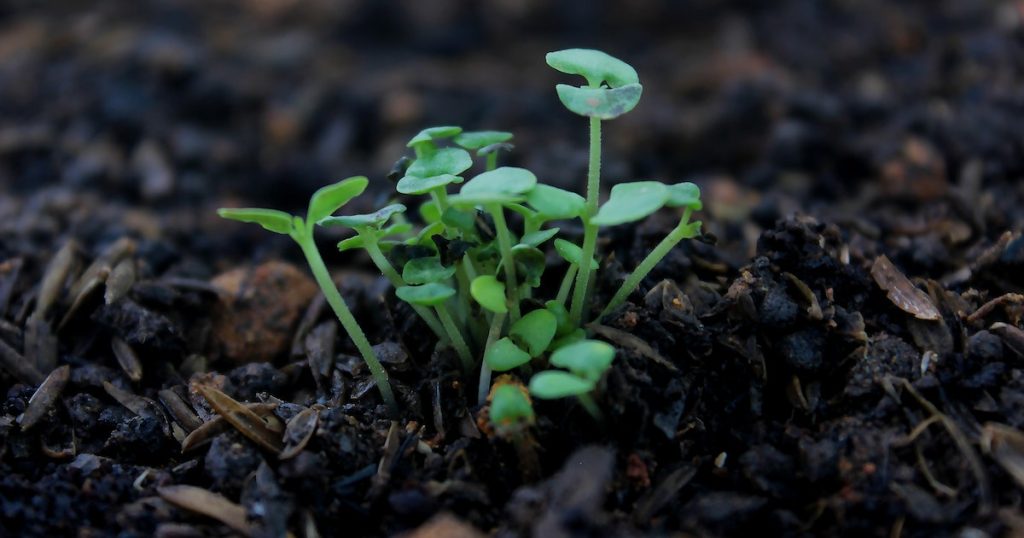We have all seen gardening stores selling perlite. It is supposed to be a fixer for all your problems with plants. But what is perlite? What are the benefits and the downsides of it? Where is it placed in plant pots?
Perlite can be placed on top of the soil in plant pots. The option of adding a layer at the bottom may also be used. It aerates the soil, provides water retention, and improves plant growth. It is non-toxic and is a naturally occurring mineral.
Perlite is all the rage, but does it work that well? There may be better alternatives to this in the market. Let us understand the mechanisms when perlite is added to the soil.

Table of Contents
What Is Perlite?
Perlite is a robust and efficient material used to amend the soil. It is a naturally occurring mineral that looks like a small bubble or square. It is non-toxic, inorganic, and lightweight. It is often used to fix soil if issues with plant growth, root rot, or wilting are seen. It can be used in multiple ways to help serve its purpose.
What Are The Uses Of Perlite?
Perlite has multiple uses which help nourish and improve the quality of the soil.
Water Retention
Perlite is characteristic of retaining water and nutrients when needed for the soil. Retaining water provides adequate moisture to the soil and reduces the chance of overwatering.
Aeration
Perlite provides aeration to the soil. This assists in the adequate movement of gasses like oxygen and carbon dioxide from the soil to the atmosphere or vice versa. This results in good soil health.
pH Neutral
Perlite is neither acidic nor alkaline. It has a pH value of 6.6 to 7.5. As a result, adding perlite to the soil does not prevent new chemical reactions or stop the old ones.
Reusable
Perlite is reusable! Once you buy perlite, you will not have to keep buying it. Perlite does not wither down over time due to its interaction with water and soil. It can be reused for new plants or different soils if handled cautiously.

Can You Put Perlite At The Top Of The Soil?
Yes, perlite can be added on top of the soil layer. It continues to impact plant growth and drainage positively. However, it might blow and move around due to the air. This can pollute your room where the plant is set up, decreasing the efficacy of the perlite and wasting a lot of material.
Can Perlite Be Added To The Bottom Of The Soil?
Perlite is often mixed with the soil itself to avail its advantages, but this is usually done in containers that are lighter in weight and lack space. In containers that have plenty of space, perlite may be added as a bottom layer as well. The roots of your plant grow in the perlite. This is often done to avoid root rot because water absorption is low in the presence of perlite.
How Much Perlite Should Be Used?
This depends on the way perlite is being used. If it is being poured on top of the soil or at the bottom of the pot, it is best to fill up only ⅓ of the container. Perlite can also be mixed in soil with the absence of a top or bottom layer. In this case, only 10-20 percent of the soil should be perlite.
How to add perlite to already potted plants? Watch this video to see the process:
What May Be Some Disadvantages Of Perlite?
Perlite has high water retention, which is perfect for desert plants. However, perlite may not be the right pick for plants that require high moisture to grow and thrive. Moreover, perlite is added on top of the soil. This may lead to perlite being removed from the soil due to its lightweight.
As a result, vermiculite is used to counter these cons.
What Is Vermiculite?
An alternative for perlite is vermiculite. Vermiculite is a naturally occurring mineral that is sandy brown. It is used as an additive in the soil to help aerate the soil more. It improves the quality of the soil and enhances the growth of plants. It has a water retention capacity which helps prevent root rot or waterlogging. Vermiculite may also be used to replace soil completely.
It is safe to use if it is pure, but that is rare. Some health concerns have been posed due to the use of vermiculite in plant growth. It may also be expensive.
Is Perlite Better Or Vermiculite?
Perlite and vermiculite have similar characteristics and benefits for the soil. However, vermiculite is known to have better water retention qualities. Hence, perlite may be a good choice for dry climates, and vermiculite may be adequate for moist or humid environments.
Frequently Asked Questions
Is Perlite Soil?
No, perlite is not soil. It is added to the soil for several purposes but is not a replacement for soil. New plants cannot be grown in perlite.
Is Perlite A Fertilizer?
No, perlite is not a fertilizer. It adds no nutrients to the soil. A fertilizer is supposed to add nutrients and nourishment to the soil. Perlite does not do that.
Is Perlite Organic?
No, perlite is not organic. It is a non-organic substance and does not contain carbon.
Is Perlite Toxic?
No, perlite is non-toxic. It is entirely safe for use in houses and small spaces.
Is Perlite Hazardous?
No, not. Perlite is entirely safe for use. Being near perlite is not a health hazard. Using it in homes does not prove to be dangerous.
Final Thoughts
Perlite is used as a fixer for soil. It is inexpensive and reusable; it is placed on top and the bottom of the soil in plant pots. It is known to provide aeration and water retention for plants. Try it out; it might solve why your plant has stunted growth.
Recent Posts
Have you found yourself wondering, 'why is my bamboo growing so slow?' Despite the fact that bamboo plants are remarkably fast-growing, it can sometimes take months (or even years!) to see any signs...
Miracle-Gro is a huge help when you are trying to get decent yields out of your plants or if you want them to thrive. However, you may have noticed that a single dose of fertilizer does little to...
